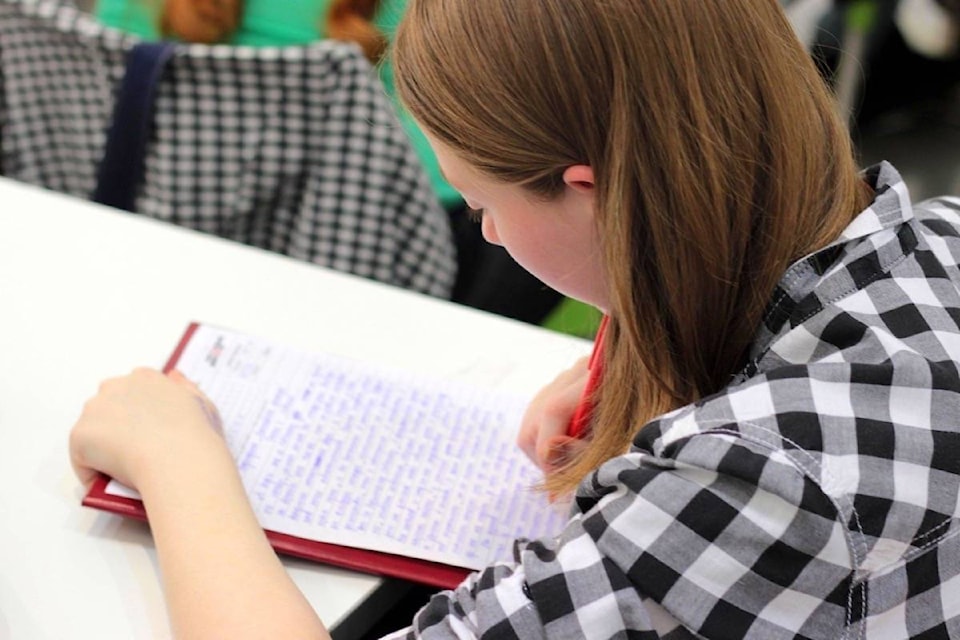Grade 10 students and teachers have a learning curve this year with the implementation of the new Grade 10 curriculum across British Columbia.
While the curriculum aims to provide students with a more innovative and connected learning approach, Suzanne Hall, Maple Ridge Teachers Association president, said it doesn’t come without challenges.
Hall explained that the biggest difference with the new curriculum is that it was changed all at once. She said the government used to do changes by one or two courses at a time.
“So what this has resulted in within the school system is a massive amount of change and a change in philosophy of how they’re going to support the teaching,” said Hall.
Hall said in the past, the school district would ensure teaching resources were available, as well as funding. She said in the past, work would be done alongside curriculum changes to ensure teaching resources were available.
According to Hall, the Ministry of Education did not provide a list of resources such as books, kits, materials, plans and textbooks to support teachers to implement the new curriculum.
The Grade 10 curriculum follows the new K-9 curriculum that was implemented in 2016. Hall said none of these curriculum changes have been provided with enough resources.
“No matter what the grade level, what teachers want is reliable, accessible, useful materials that can help them teach well,” said Hall.
Hall said various resources could include lessons and materials, suggested books, teaching ideas, educational websites and videos.
Shannon Derinzy, School District 42 assistant superintendent, said providing teachers with resources for course materials is more challenging now because the new curriculum goes beyond using a textbook.
“We have a secondary helping teacher that’s working with teachers to find resources because the idea of this curriculum is it’s less textbook driven and more hands-on and first-source than a textbook, so how do you access that.”
However, Grant Frend, Thomas Haney secondary principal, views the curriculum as a positive change.
“It provides more flexibility for teachers to design a curriculum that meets the needs of the student. You can see where the students are at and plan the course around what they need. It gives the teachers the option to tailor the course, rather than be so prescriptive. There really is more opportunity to explore.”
Frend explains the new curriculum allows staff to choose the things they think are interesting in order to tailor the course around students depending on what kind of experience they have with each class.
The Ministry of Education calls the new learning outcomes “innovative and flexible.”
Hall said the BCTA was involved in the process and that the Grade 10 curriculum has been generally well-received.
“A lot of this process was driven by teachers and it’s generally well-received. The challenges are, how am I supposed to teach this without any resources,” said Hall.
Grade 10-specific changes include adding a health component to physical education, changing the planning 10 course to a course called career life education and dividing English into five more focused areas.
The new courses in the English department are literary studies, new media, spoken word, creative writing and composition, and students are required to take two of those.
Frend, who also teaches English, calls it an integrated approach.
“For example here, last year we surveyed students to find out what their interests are, and tried our best to create pairings that matched up with what students are asking for,” said Frend.
Frend explained he teaches a block of new media/creative writing and shares the same group of students with a technology block taught by another teacher.
Together the two staff have co-planned a number of assignments to ensure the content can overlap.
With fewer learning outcomes, students are able to dive deeper into course materials.
“There used to be a lot of prescribed learning outcomes. So the challenge always was feeling that in order to go deeper with the learning, there were some things you had to cover very quickly and not with a lot of depth, said Frend.
According to the Ministry of Education, the curriculum focuses on hands-on learning, critical thinking and flexibility.
Hall agreed that the new curriculum opens the opportunity for flexible coursework.
“The intention is to get away from coursework that is considered the memorization of facts. What the [new] curriculum does is open up to teachers more flexibility in how they organize the pieces of their teaching and the strategies they use,” said Hall.
According to the ministry, new curriculum for Grade 11 and 12, as well as a revised B.C. graduation program will be implemented in September 2019.
